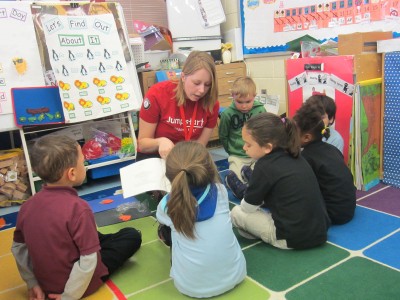Editor’s Note: This original version of this brief was published by the National Technical Assistance Center on Positive Behavior Interventions and Supports (PBIS). Access the original brief in PDF format. In addition, this brief was researched and written before the novel coronavirus pandemic spread in the United States.

Resources for Making Your School Year Safer, More Predictable, and More Positive
It goes without saying that students need to feel safe and have supportive relationships for their social, emotional, and academic learning to be optimized. Students experiencing trauma, such as from public health crises, weather disasters, or other upsetting events, may have been exposed to unpredictable schedules, inconsistent supervision, or food insecurity and desperately need school to be their safest, most predictable, and most positive setting, especially if they have been displaced or are without utilities or basic comforts.
“Whether schools resume in-person, on-line, or somewhere in between, educators will play a critical role in creating positive, predictable, and safe experiences for students,” says Brandi Simonsen, co-author of the brief, a professor of special education at the Neag School and co-director of the National Technical Assistance Center on PBIS. “We have been inspired by the amazing work of educators in feeding, supporting, and teaching students this spring, and we will be here to support them through the next phase of this public health crisis.”
Multi-tiered Systems of Supports (MTSS), such as PBIS, are ideal frameworks for implementing strategies to support students coming back to school and to prevent and address further challenges. A tiered approach focuses on attending to the whole school environment to help the vast majority of students be successful and providing a continuum of support for those who need more.
With this in mind, we recommend the following six strategies for school teams to ensure a safe, predictable, and positive school year. These strategies are beneficial for all students if the school has been closed, as well as for individual students returning from an extended time away from school.
Re-teach, remind, and acknowledge positive school-wide expectations
Yes, you may have taught your positive school-wide expectations at the start of the year, but students coming back to school after an unplanned absence have been in different environments, with different expectations for their behavior. Hence, a strong focus on re-teaching and modeling expected school behaviors will help to re-establish and maintain a school culture where students can expect to see prosocial behavior from their peers and the adults in the building. It is often useful for us to keep in mind that students may have been practicing different behaviors while away from school and will benefit from re-teaching and opportunities for practice rather than exclusion.
A strong focus on re-teaching and modeling expected school behaviors will help to re-establish and maintain a school culture where students can expect to see prosocial behavior from their peers and the adults in the building.
Re-teach classroom routines
Because students spend most of their time in classroom settings, it’s critical that teachers establish a supportive environment and emphasize positive and proactive classroom behavior support approaches. Directly teaching classroom routines in the context of positive schoolwide expectations, engaging students with effective instruction, and providing specific feedback to encourage desired behaviors will go a long way to establishing a positive classroom climate. After traumatic or unplanned events, making routines as predictable as possible will help students regain a sense of safety that they may have been missing.
Focus on the positive, and avoid punitive approaches
Some teachers, in efforts to add structure and predictability to the classroom, will use class-wide clip charts or colored behavior cards as a behavior management tool. In our experience, these public punishment systems can do more harm than good, particularly for students with disabilities or those experiencing trauma. Instead, focus on teaching, practicing, and acknowledging expected behaviors, with the understanding that some students may need more teaching, practice, and acknowledgment to use them.
Get to know your students – again
Simple strategies—like greeting students at the door by name, learning about students’ interests outside of school, and using their strengths and preferences in instruction—can put students at ease and build student engagement. Make every attempt to recognize and value individual strengths or skills in each of your students. During the absence from school, students may have experienced extreme loss, so it’s important to re-connect and understand their recent experiences.
Look for signs that students might need more help. The strategies described here can be effective in supporting the vast majority of students, even those experiencing trauma, to be successful, but others will need more support. Be aware of signs of trauma and use universal screeners to identify students who may need more support—short or long term—to have a positive school experience.
Re-engage families as partners in their child’s education
Building common messages across home and school-related to safety, responsibility, and respect for all is helpful to students. Schools become a unifying and supportive part of the community when they reach out to families and find new ways to partner meaningfully with them in the education of their son or daughter. It is crucial to review strategies for communicating with parents to ensure they are timely, supportive, and accessible (e.g., in-home languages). Host informal events for families at school to increase connections, and consider inviting community leaders to attend the events as well.
Access the original brief in PDF format. Brandi Simonsen is a professor of special education at the Neag School and co-director of the National Technical Assistance Center on PBIS. Heather George at the University of South Florida, Tim Lewis at the University of Missouri, and Kent McIntosh of the University of Oregon are also co-directors of the Center on PBIS. Rob Horner, an emeritus professor at the University of Oregon, helped developed and implemented school-wide positive behavioral interventions and supports (PBIS) and Jessica Swain-Bradway is the executive director of the Northwest PBIS Network.
 Facebook
Facebook
 Twitter
Twitter
 LinkedIn
LinkedIn
